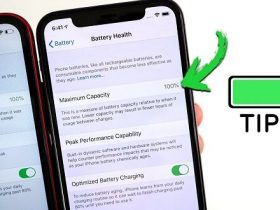The Apple A16 Bionic is a 64-bit ARM system on a chip that is used in the iPhone 14 Pro Max. Apple designed the chip, and TSMC manufactures it. It is only found in these two models. Its performance is excellent, and it’s capable of handling the most demanding applications.
Apple A16 Bionic CPU performance
Apple’s new A16 Bionic has already made a few trips to Geekbench, showing off its CPU’s impressive capabilities. The phone’s CPU scored 40% higher on the benchmark than Qualcomm’s Snapdragon 8+ Gen 1 processor. Now, Apple has tested the new chip’s performance on AnTuTu, a popular benchmark that measures the speed of CPU cores. As expected, the results are impressive.
The A16 Bionic is built on TSMC’s new 4nm process. It features 16 billion transistors. It’s built around a six-core design with two-performance cores and four energy-efficient cores. The processor’s performance has been compared to that of desktop processors, which are made with higher-density chips.
The A16 Bionic is faster than the A15 Bionic chip in several categories. In a single-core test, it scored ninety-seven thousand points. In a multi-core test, it scored four thousand eight hundred twenty-one points. Compared to this, the older A15 Bionic chip scored just 289 points.
Apple A16 Bionic GPU performance
While Apple is known for its powerful processors, it is not clear how much of an impact the GPU has on the processor performance of the new A16 Bionic. Despite having the same number of cores as its predecessor, the new chip performs about 10% faster in single-core tests. However, the chip has no discernible improvement in multi-core testing.
The GPU performance of the A16 Bionic chip is better than that of the previous generation A15 Bionic chip, which powered the iPhone 14 Pro. This is despite the fact that the two devices have the same architecture – a six-core CPU, a five-core GPU node, and a 16-core Neural Engine. The new chip is capable of processing more complex tasks, such as gaming.
Apple has built-in custom image signal processing (ISP) on the A16 Bionic processor. This new chip supports the new camera hardware, and can perform up to four trillion operations per photo. It also supports high-speed, always-on displays, and high-peak brightness. This makes it possible to create better photos while using your phone.
Memory score
The Apple A16 Bionic is a 6-core chipset that was announced on September 7, 2022. It’s built using 4-nanometer process technology and has two performance cores and four-efficiency cores. The chip also has a 5 cores GPU. Combined, the new processor and GPU power a powerful device.
However, the new chip doesn’t fare well in the synthetic Geekbench benchmark. This may surprise fans who were planning to upgrade their flagships or purchase newer devices. However, the results are a good indication that Apple is placing a greater focus on efficiency than performance. The company says the A16 chip consumes 20 percent less power than its predecessors.
The new chip is significantly more efficient than the A15, with a 7% increase in single-core performance and no change in multi-core performance. It also has 50% more memory bandwidth than its predecessor. The A16 Bionic also boasts a brand-new fabrication technology and two high-performance cores.
NVMe support
The Apple A16 bionic processor is exclusive to iPhone, and it’s capable of significantly higher performance than its predecessor. In fact, Apple claims that it’s up to 40% faster than its nearest competitor. The processor is also capable of 1 Hz refresh rates, high peak brightness, and smoother display graphics. The company plans to use the new chip in the iPhone 15 Plus.
The new chip’s frequency, instruction set, and process fabrication have improved over the last generation. The processor’s LPDDR5 memory configuration can support up to 24GB of storage. It features Apple’s new AI Neural Engine, which has 20 percent higher performance than its predecessor. Both chipsets also feature LTE cat 24 modems.
The Apple A10 and A13 SoCs are capable of securing data with OS-bound keys. This type of encryption is performed by the Secure Enclave Boot ROM. The application processor sends a sepOS image to the Secure Enclave Boot ROM, which verifies the signature and cryptographic hash. Once this step is complete, the Secure Enclave Boot ROM transfers control to the sepOS kernel.









Leave a Reply